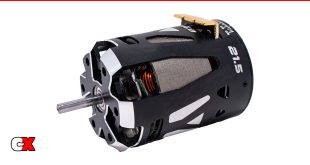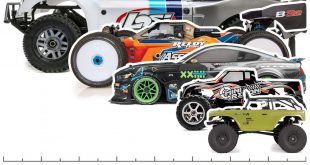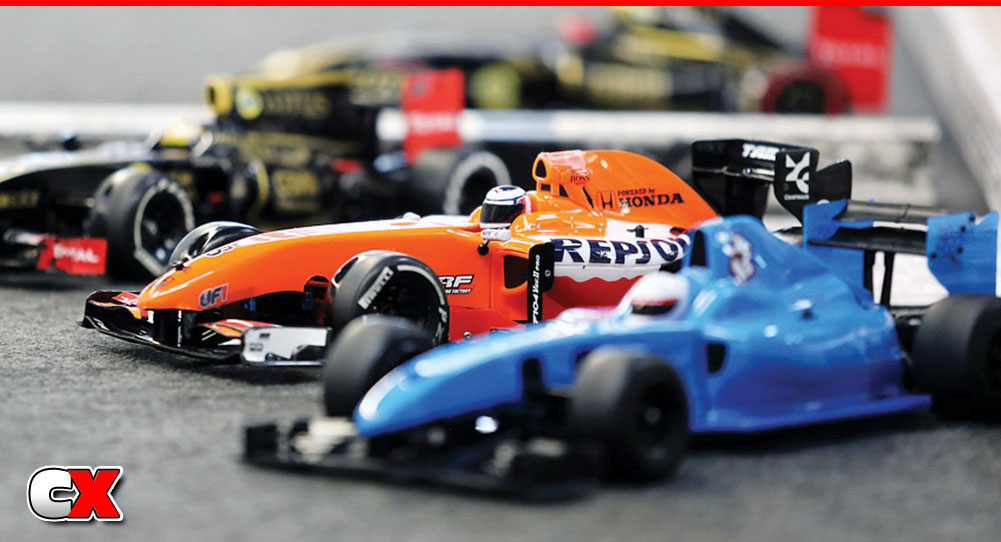
WHAT IS UF1?
Ultimate Formula 1, or UF1, was started back in 2010 by a small group of guys that love full-scale Formula 1. They really had no plans to start a series, they just tried to get people to agree to come out and race their F1 cars! After a couple of months this phenomenon started to grow, attracting more and more F1 drivers. The originating founders (Charles Lightfoot, the series owner, Tim Ruwe, Mark Goldwater, and Doug Rebal) set up a simple set of rules and the UF1 was born. Since its inception, the UF1 has grown by leaps and bounds and now has both a Summer Series and a Winter Series, four affiliate locations (Houston, Nebraska, New Jersey and the Mid-West), and it attracts drivers from as far away as Japan. They even have the UF1 Series name protected under a trademark! This series is so much fun and it got me hooked competing in it for the last few years.
VENUES
As I mentioned above, the UF1 has both a Summer and Winter Series. The Summer Series consists of eight races at eight different venues throughout Southern California. Some are at dedicated tracks while others are in prepared parking lots. This series requires you to know a lot about the handling and tuning of your car as each track is vastly different. Races are held once a month. The Winter Series is a seven race series, all run on a carpet track. This series is just as difficult as the Summer Series because once everyone has their cars dialed in, they are all extremely fast! Races for the Winter Series are held twice a month.
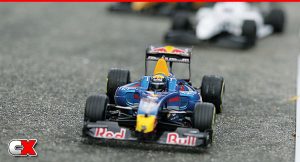 THE RULES
THE RULES
The main goal of the UF1 is to keep things ‘realistic-ish’ to full-scale Formula 1. Yes, I said realistic-ish, or scale, and that is the term the UF1 has adopted to describe the rule set. To ensure this, we have a few core rules we go by. We start by only allowing cars that are up to 190mm wide. Unfortunately, this does exclude a few of the newer cars coming out, but once the cars start getting wider than 190mm they no longer look like scale F1 cars.
The front suspension can be either fully independent (upper and lower arms can pivot) or Tamiya-style (lower suspension arm is fixed) but the inboard mounting points must attach inside the bodywork. This keeps the car looking like the real thing and prevents drivers from using ‘un-realistic-ish’ pan-car-type front ends. The rear suspension can be a T-bar, side link or fully independent, as long as it stays within the 190mm width.
We also use rubber tires; no foam tires are allowed. This has actually been a great rule as a lot of tire manufacturers have stepped up and produced some excellent rubber. Each tire manufacturer offers three or four types of tire compounds, so there is always a set of tires that work.
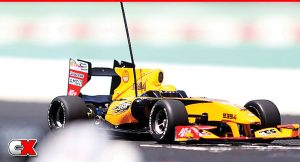 To keep speeds down and allow the newcomers a chance to compete, the UF1 requires all cars to use a ROAR-approved 21.5 brushless motor as well as a ROAR-approved ESC set in ‘blinky’ mode, or its non-timing mode. Some people think that this might make the cars slow but, in a lightweight, 2WD chassis it’s really quite fast while still keeping the racing fair. Batteries must also be ROAR-approved and can be a full length 2S LiPo battery or one of the newer shorty packs.
To keep speeds down and allow the newcomers a chance to compete, the UF1 requires all cars to use a ROAR-approved 21.5 brushless motor as well as a ROAR-approved ESC set in ‘blinky’ mode, or its non-timing mode. Some people think that this might make the cars slow but, in a lightweight, 2WD chassis it’s really quite fast while still keeping the racing fair. Batteries must also be ROAR-approved and can be a full length 2S LiPo battery or one of the newer shorty packs.
We encourage the bodies to have realistic F1 liveries and currently have the following teams in the Series: Patron Honda, RedBull Racing, Caterham, Escuderia Ferrari, Lotus, Elf Tyrrell, Sahara Force India, Hot Bodies Ferrari, Repsol Honda, Benson and Hedges Jordan, Marlboro Mercedes and Williams BMW. As you can see, there are quite a few current teams, older teams and fantasy teams, but everyone gets pumped when it comes time to display their rides.
QUALIFYING
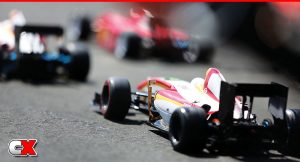 The UF1 utilizes a unique system for qualifying. Qualifying heats are established and each heat holds ten cars. Each heat is started using an IFMAR starting system (cars released to run every two to three seconds and each is counted on his or her own clock), however, the heats only last three minutes! During your single three-minute qualifier, your goal is to put in the best laps you can but, in the end, the computer will only take your five fastest laps and average them for a final resulting lap. So, the goal here is consistency and not necessarily burning off the fastest lap
The UF1 utilizes a unique system for qualifying. Qualifying heats are established and each heat holds ten cars. Each heat is started using an IFMAR starting system (cars released to run every two to three seconds and each is counted on his or her own clock), however, the heats only last three minutes! During your single three-minute qualifier, your goal is to put in the best laps you can but, in the end, the computer will only take your five fastest laps and average them for a final resulting lap. So, the goal here is consistency and not necessarily burning off the fastest lap
We weren’t sure how well this system would work, but have found that after qualifying, drivers in position 1 through 10 were less than one second apart! Yes, you read that right … one second! At every race there are times where drivers are only 1/1000 of a second apart! Now if that’s not like real F1 qualifying I don’t know what is!
RACING
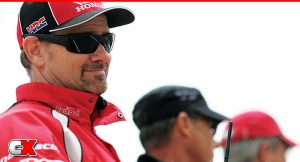 The races start like any normal RC race — 1st through 10th in a single file line and at the sound of the tone, the drivers go. However, that’s where the similarities between any other form of RC racing stop. After qualifying, the UF1 runs three heads-up, main-style rounds. Your performance is based on your final finishing position (for that round) and all three rounds are then added up for your final daily score. To up the ante even more, we’ve extended the race length to 15 minutes! That’s 45 minutes of racing in one day as opposed to 5-7 minutes in most other forms of racing.
The races start like any normal RC race — 1st through 10th in a single file line and at the sound of the tone, the drivers go. However, that’s where the similarities between any other form of RC racing stop. After qualifying, the UF1 runs three heads-up, main-style rounds. Your performance is based on your final finishing position (for that round) and all three rounds are then added up for your final daily score. To up the ante even more, we’ve extended the race length to 15 minutes! That’s 45 minutes of racing in one day as opposed to 5-7 minutes in most other forms of racing.
But wait, there’s more; we’ve added even more “realistic-ish” to the UF1 by adding pit stops. During your race you are required to make two mandatory pit stops. A pit lane has been designated complete with a pit boss, portable timer and pit stickers. When you enter the pit, the pit boss will tap a foot pedal connected to a timer. A small, illuminated pit timer box will turn on (with both lights and sound) and stay lit for a set amount of time (pre-designated before the race). The pit boss puts a sticker on the nose of your car indicating you have made a stop, and when the timer goes out, your car is sent back onto the track. You can use this pit time as a relaxing moment or, if you are stuck in traffic, as a pit strategy to get into clean air.
SCORING
The scoring is based on a 100-0 points system, where first place for a round gets 100 points, second gets 99 points, third gets 98 and so on. As I mentioned before, there are three rounds per day, so there is the potential to get 300 points (if you win all three races). We’ve also added a +2 point bonus to the person who sets the TQ for the day. So, as you can see, consistency is the key to being on top at the end of the race day.
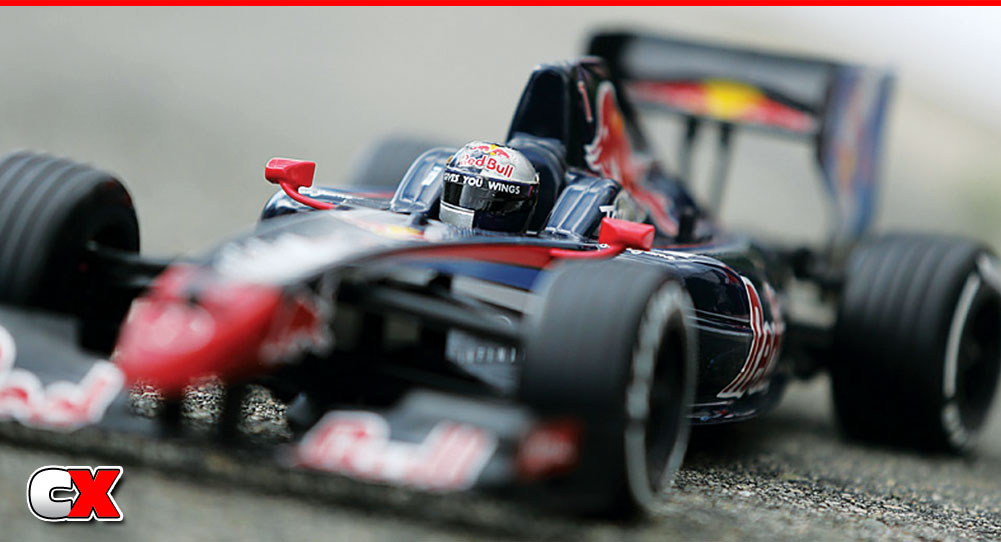
THE CARS
In the beginning, everyone ran the Tamiya chassis simply because of its availability and parts support. After the first couple of seasons, the growth of the UF1 spawned new cars from companies like 3Racing, Speed Passion and TOP Racing. Each of these chassis’ has seen success in the Series, and it’s great to see multiple companies supporting a Series this young. There have even been rumors of additional companies coming on board to produce 190mm chassis to fit our Series!
THE DRIVERS
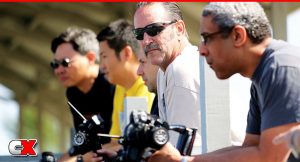 The UF1 currently sees an average of 35 to 40 racers per event. Every driver scores points depending on their results at the end of the day and these points are tallied towards the end-of-season Driver’s Championship. These racers range from a relatively new RC driver all the way up to guys who race at the National level. While it may seem a bit unfair for the new guys, everyone is extremely helpful and aware of the fact that to keep the UF1 alive, we must all help each other. The top guys are always answering questions for the newer folks, providing set-up tips, tire tips and help with gearing. It’s like a big family of F1 drivers.
The UF1 currently sees an average of 35 to 40 racers per event. Every driver scores points depending on their results at the end of the day and these points are tallied towards the end-of-season Driver’s Championship. These racers range from a relatively new RC driver all the way up to guys who race at the National level. While it may seem a bit unfair for the new guys, everyone is extremely helpful and aware of the fact that to keep the UF1 alive, we must all help each other. The top guys are always answering questions for the newer folks, providing set-up tips, tire tips and help with gearing. It’s like a big family of F1 drivers.
TEAMS
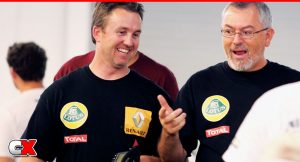 Team liveries have always been encouraged, but mainly for the scale look of F1. In the 2012 Winter Series, myself and good friend Mike Kennedy teamed up and started flying the black-and-gold Team Lotus livery. Our cars matched, we had team shirts made and we acted as a team, helping each other out and getting our cars dialed in. This teamwork gave us a definite edge as Mike went on to win the 2012 Winter Series and I won the 2012 Summer Series. This team work caught on and now we have 12 two-man teams within the Series. Each team member’s individual points are tallied together at the end of the day to post toward the end-of-Series Constructor’s Championship. The winning team not only gets bragging rights, but also gets their names on a plaque on the Constructor’s Trophy. It’s certainly a prestigious honor to be on that trophy considering the amount of talent that is growing in the UF1.
Team liveries have always been encouraged, but mainly for the scale look of F1. In the 2012 Winter Series, myself and good friend Mike Kennedy teamed up and started flying the black-and-gold Team Lotus livery. Our cars matched, we had team shirts made and we acted as a team, helping each other out and getting our cars dialed in. This teamwork gave us a definite edge as Mike went on to win the 2012 Winter Series and I won the 2012 Summer Series. This team work caught on and now we have 12 two-man teams within the Series. Each team member’s individual points are tallied together at the end of the day to post toward the end-of-Series Constructor’s Championship. The winning team not only gets bragging rights, but also gets their names on a plaque on the Constructor’s Trophy. It’s certainly a prestigious honor to be on that trophy considering the amount of talent that is growing in the UF1.
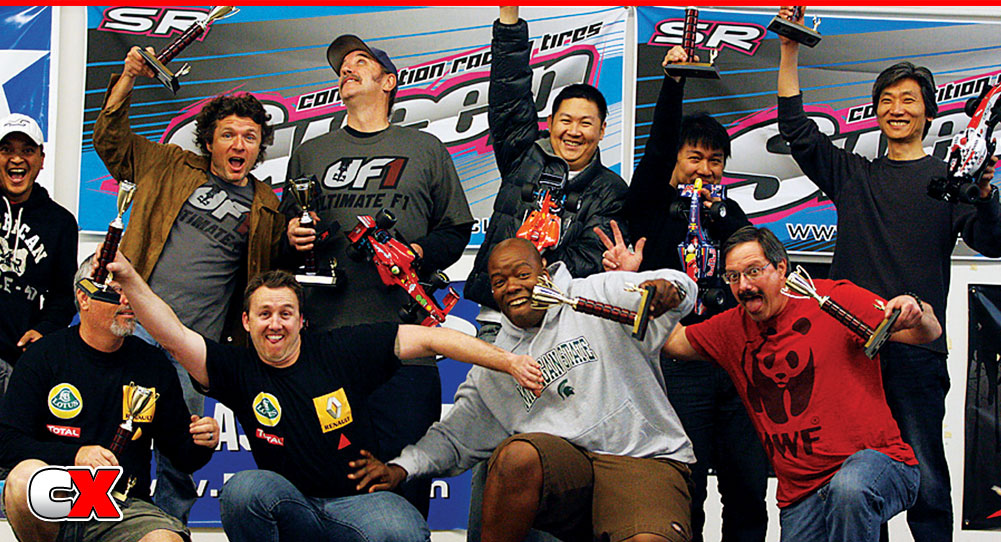
FINAL THOUGHTS
At the start of the 2013 Winter Series, Charles decided to step down from the UF1 but continue solely as a competitor. Having a major love for this Series (and Formula 1), I decided to pick it up and help continue it on its way. It’s a major project, so I’ve assembled a group of dedicated members to help me keep the UF1 on track. I’d like to thank Fred Medel, Mark Goldwater, Mike Kennedy and Tim Ruwe for their help and support with the UF1. Let’s keep it going and growing guys for many, many years.
For more information, you can visit the UF1 site here: https://uf1rc.com/
 CompetitionX CompetitionX is the most up-to-date source for RC Car News, Reviews and Videos for Radio Control. We also have the most comprehensive Manual Database on the web.
CompetitionX CompetitionX is the most up-to-date source for RC Car News, Reviews and Videos for Radio Control. We also have the most comprehensive Manual Database on the web.
